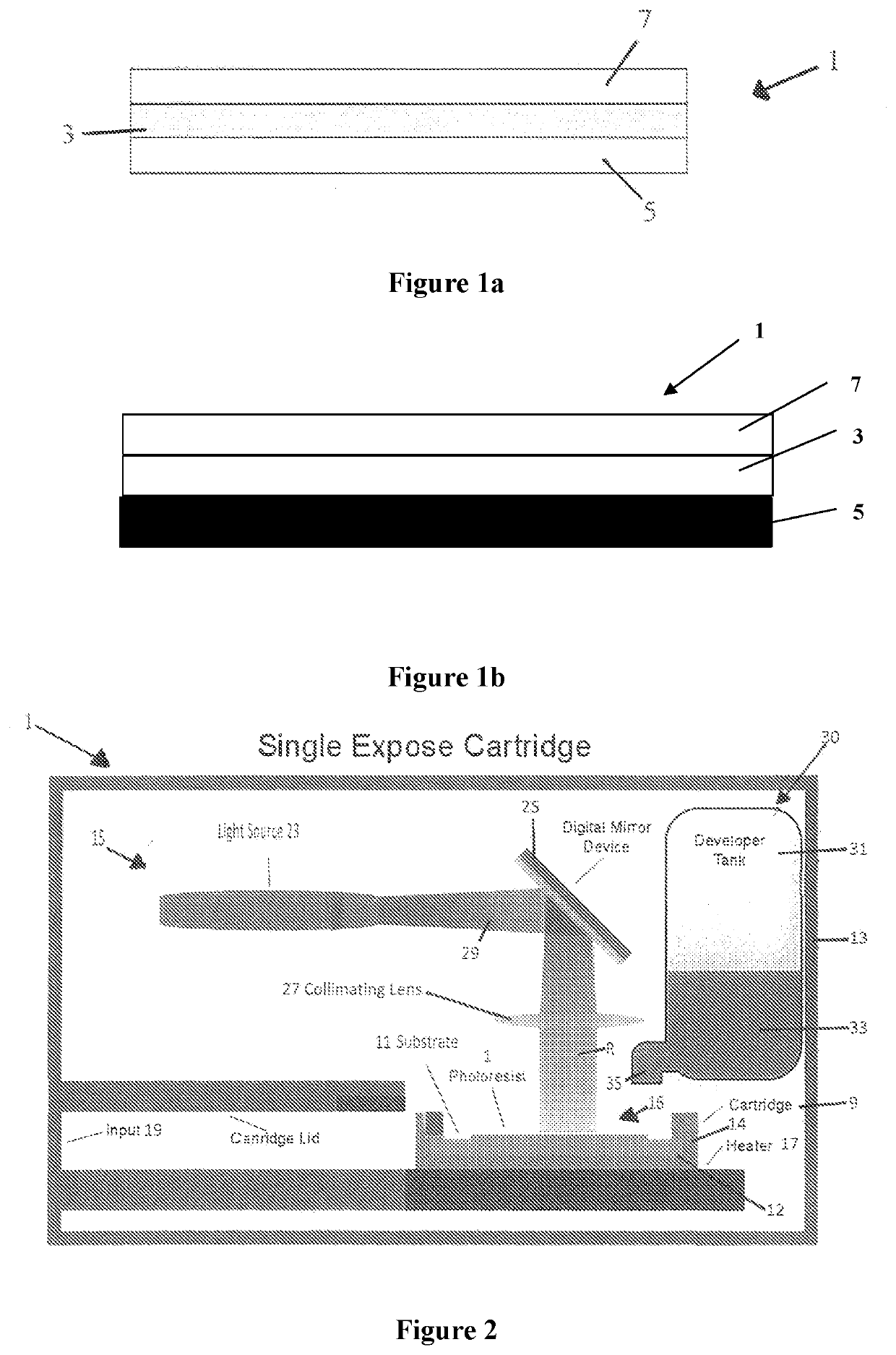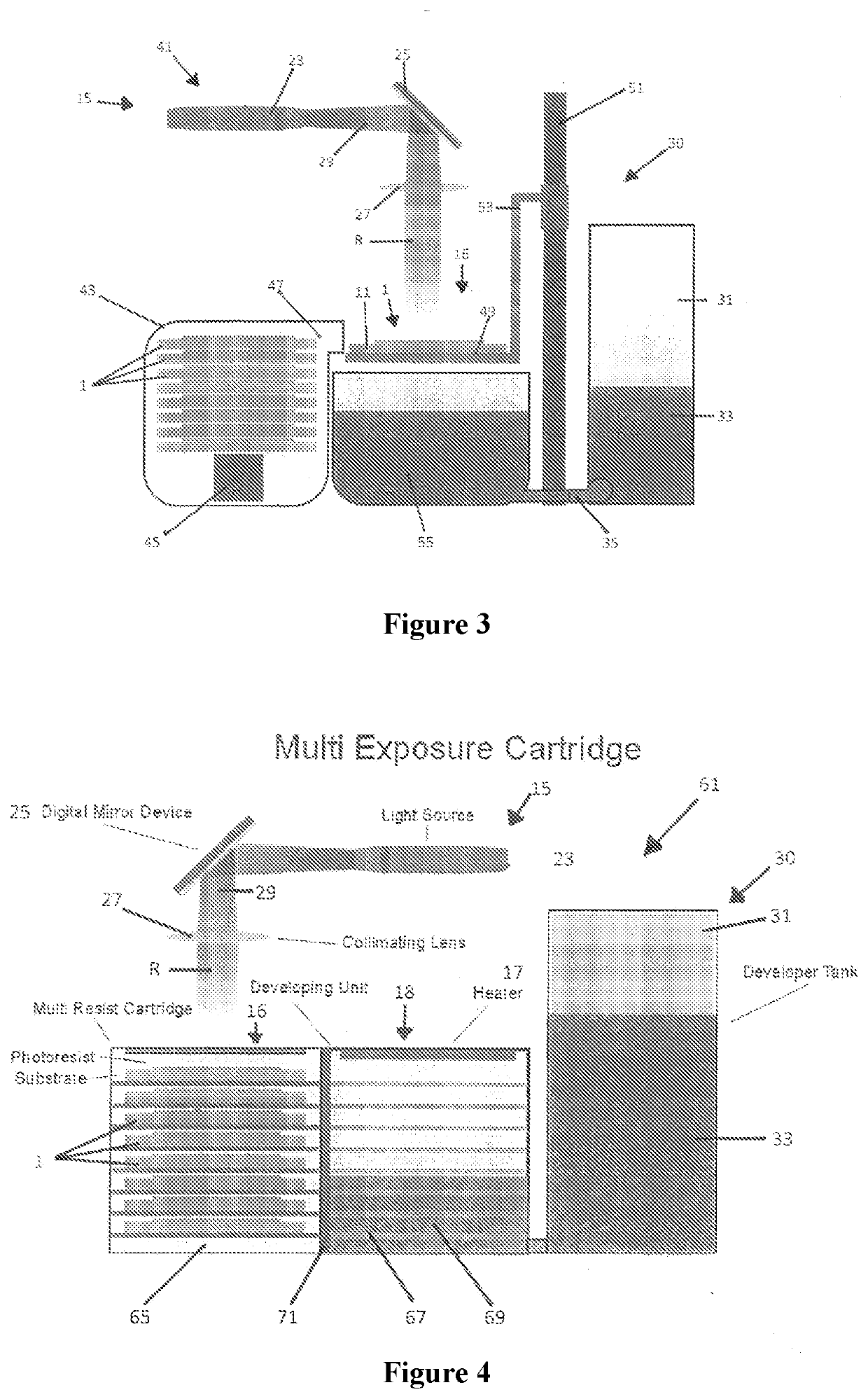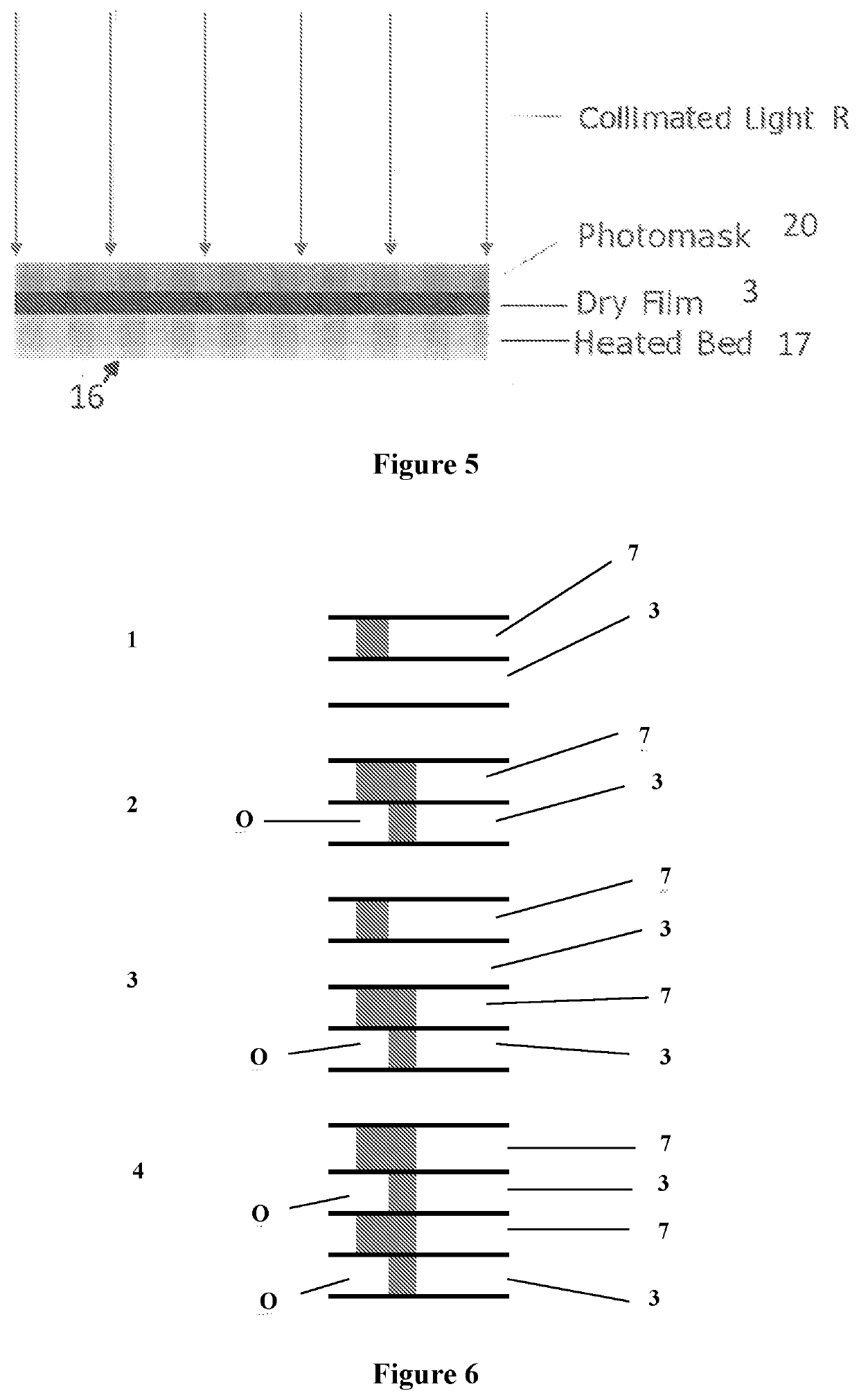Apparatus for and method of manufacturing an article using photolithography and a photoresist
- Summary
- Abstract
- Description
- Claims
- Application Information
AI Technical Summary
Benefits of technology
Problems solved by technology
Method used
Image
Examples
example 1
[0198]In one example we provide a dry film pre-laminated photoresist made up of two layers of photoresist material 3, 7, nominally each approximately 5 μm thick. In this example, the top layer 7 is more sensitive to radiation in the form of UV light than the bottom layer 5. This creates a photoresist that can selectively allow or not allow exposure to the laminated layer beneath it.
[0199]Such a photoresist can be used to manufacture a 3D printed article with an overhang. Where there is an overhang, the top layer 7 can be exposed to a lower intensity light (or light of a different wavelength) that does not activate the bottom layer 3. Where there is no overhang a higher intensity light (or light of a different wavelength) can be used to expose through both layers.
[0200]Thus, the two layers of photoresist material have different sensitivities to a characteristic of the radiation from the exposure source. Consequently, in this example, a single exposure source, or at least a single typ...
example 2
[0209]In this example, loading of metal or ceramic particles, or dye, in a layer of photoresist could also prevent or at least control exposure of layers laminated beneath it. The loading of particles can be any desired proportion of the photoresist material, for example the particles might comprise 0.1-50% of the photoresist material.
[0210]The layer of metal / ceramic or dye loaded photoresist will also have the same advantages as described above, in providing a layer of photoresist material having a different sensitivity to radiation than adjacent or other layers of a multi-layer photoresist sheet. Such a variation in sensitivity enables the layers to activate differently when exposed to a common or single source of radiation, or to activated differently when exposed to multiple sources of radiation configured to emit radiation having different characteristics.
[0211]Consequently, this enables the multi-layer photoresist to be laminated first and then exposed —rather than expose (wit...
example 3
[0216]A two layer photo resist was created by laminating a sheet of DF 3510 dry film photoresist onto a substrate and then a sheet of photoresist DF 2020 was laminated on top of this. This created a two layer photoresist material with each layer having different exposure sensitivity characteristics.
[0217]Lines were patterned using a MicroTech LW405A laser writer in one direction on this multilayer photoresist using a 100 mW 406 nm laser and then a further set of lines were patterned at 90 degrees to these lines using a 18 mW 378 nm laser.
[0218]After exposure the multilayer photoresist was cured at 100° C. for 10 minutes to cross-link the structure.
[0219]Following curing, the structures were developed in cyclohexanone to remove all uncross-linked material.
[0220]The resulting images shown in FIG. 6 shows a view from the top with a clear over hang in the top left of the image. The view from the bottom of FIG. 7 shows the pattern of two sets of intersecting lines where one set of lines ...
PUM
 Login to View More
Login to View More Abstract
Description
Claims
Application Information
 Login to View More
Login to View More - R&D
- Intellectual Property
- Life Sciences
- Materials
- Tech Scout
- Unparalleled Data Quality
- Higher Quality Content
- 60% Fewer Hallucinations
Browse by: Latest US Patents, China's latest patents, Technical Efficacy Thesaurus, Application Domain, Technology Topic, Popular Technical Reports.
© 2025 PatSnap. All rights reserved.Legal|Privacy policy|Modern Slavery Act Transparency Statement|Sitemap|About US| Contact US: help@patsnap.com



